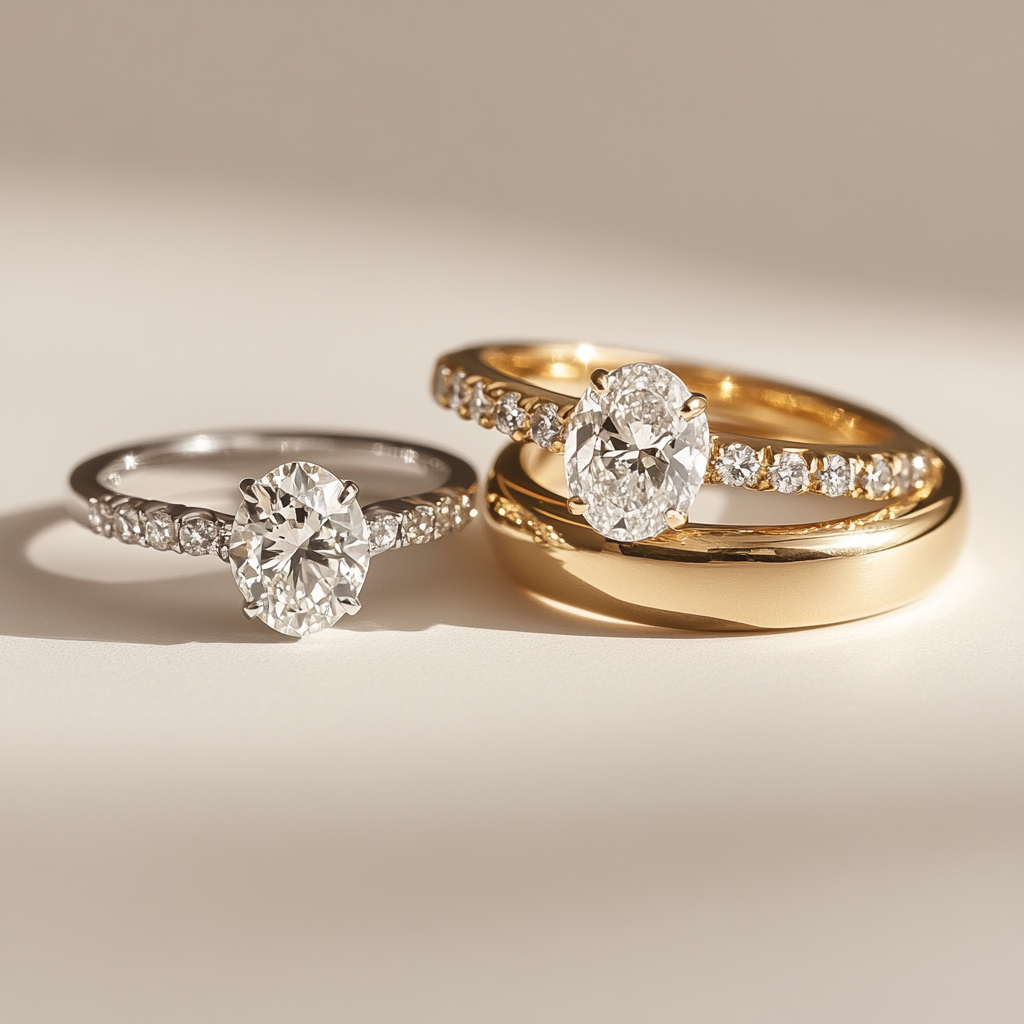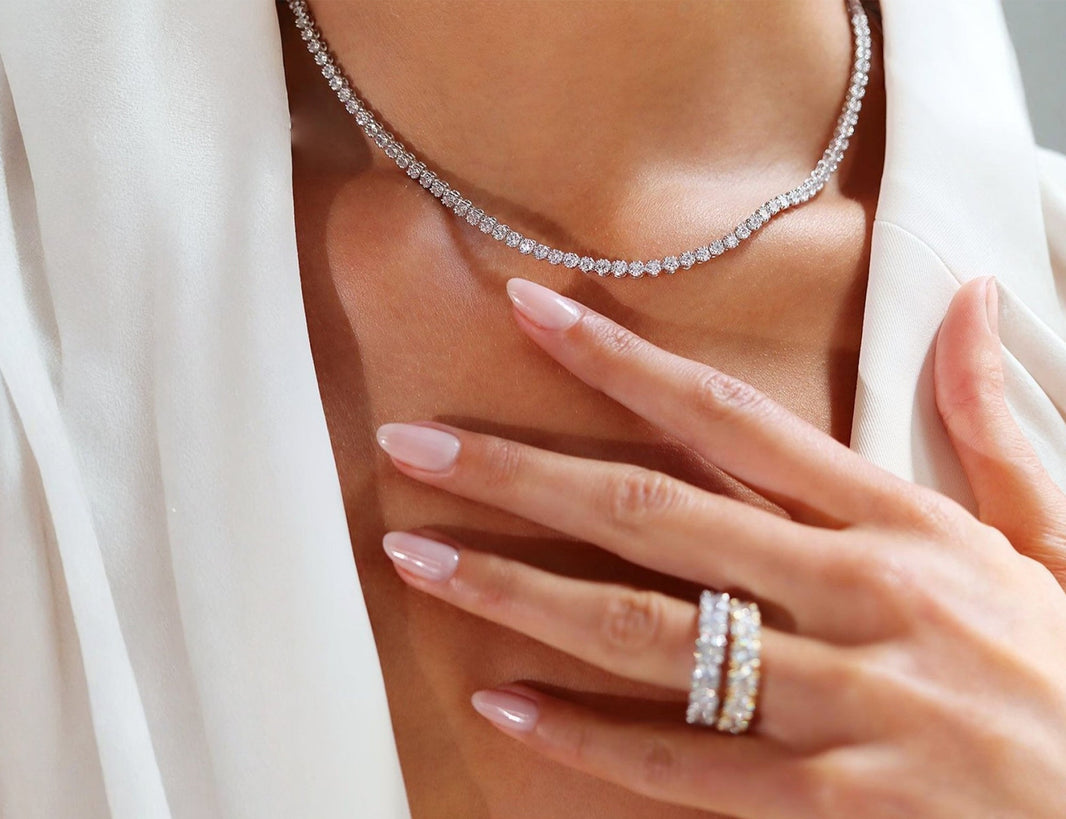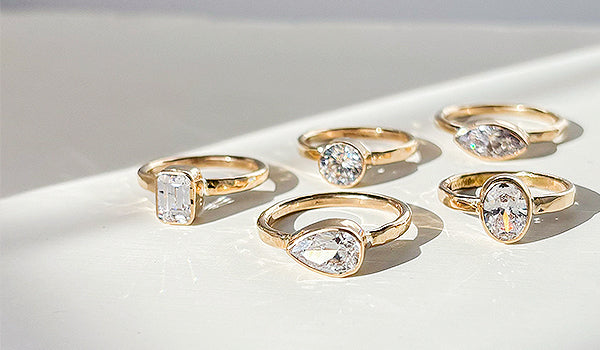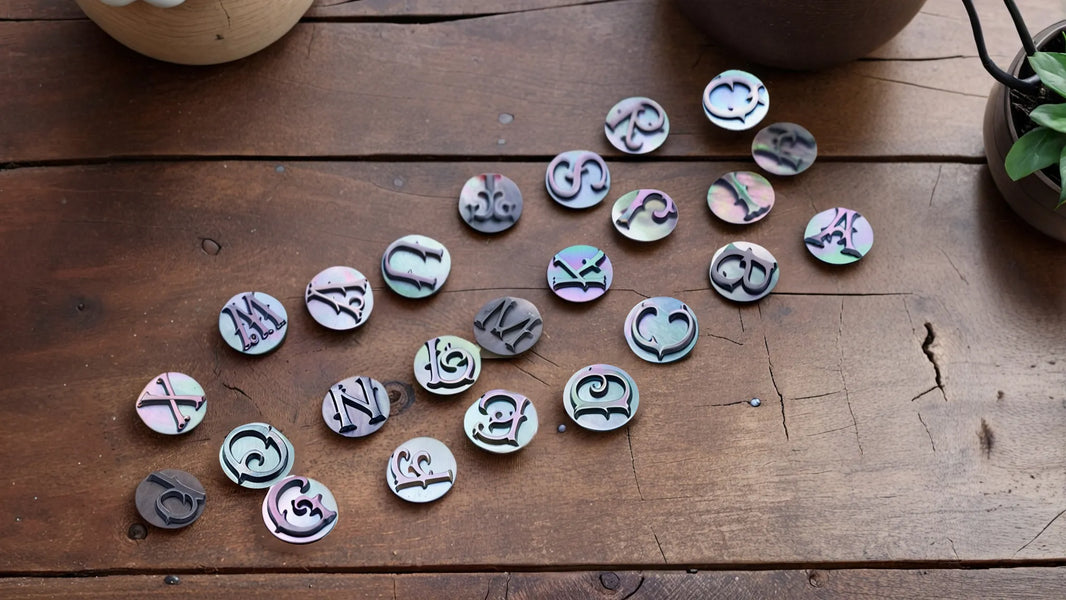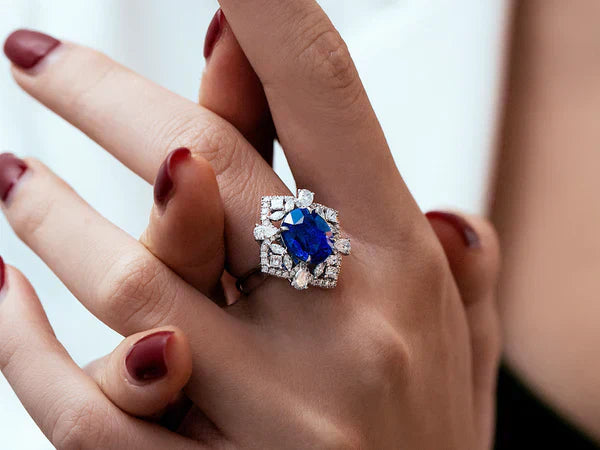Choosing an engagement ring isn’t just about the sparkle—it also needs to stand up to real life. From daily handwashing to accidental bumps on countertops, rings face more wear and tear than many people realize. The setting you choose plays a major role in how well your gemstone stays secure over time. Some styles offer better protection than others, especially for those with active routines or softer stones. A strong, well-designed setting helps keep the ring beautiful and intact for years to come.
What Makes Engagement Rings Vulnerable to Damage?
Engagement rings are meant to last a lifetime, but daily wear can slowly wear them down—especially if they aren't designed with durability in mind. Between the hardness of the gemstone and the structure of the setting, several factors determine how well a ring holds up over time. To protect both the stone and the metal, it's important to understand what causes damage and how to reduce the risk through smart choices.

Everyday Risks That Can Harm Your Ring
Daily routines can expose rings to scratches, impacts, moisture, and harsh chemicals. Tasks like washing dishes, exercising, or using skincare products may seem harmless, but they can weaken prongs, dull the finish, or loosen the gemstone over time. Rings worn constantly during work—especially in hands-on jobs—are at higher risk of physical stress. That’s why options like engagement rings for nurses often feature protective settings and low profiles to reduce snagging and impact.
How Gemstone Hardness Affects Durability
The Mohs Hardness Scale measures how resistant a gemstone is to scratching. Diamonds rank highest at 10, making them ideal for everyday wear. Sapphires and rubies follow closely, while softer gems like opals, pearls, and tanzanite rank much lower and require more protection. Knowing where your gemstone falls on this scale helps determine the level of care and the type of setting it needs to stay safe.
Setting Design Plays a Key Role in Protection
Not all settings offer the same level of support. Open prong settings may highlight the stone’s beauty, but they also leave it more exposed to knocks and wear. Enclosed styles like bezel set engagement rings provide full coverage around the stone, reducing the risk of chips or dislodging. For those who want a secure and practical design without sacrificing style, the setting can make all the difference in long-term engagement ring protection.
What Are the Most Protective Engagement Ring Settings for Daily Wear?
When selecting a ring to be worn daily, protection is as important as appearance. There are settings that are better designed for daily wear and cut the risk of damage to the gem or metal. Whether you want sleek, modern, or highly secure, the right setting offers extra assurance—especially for active living or delicate gemstones.
- Bezel Settings: Bezel-set engagement rings are the most secure type of ring possible. Under this setting, there is a thin ring of metal that goes all the way around the entire perimeter of the gemstone, holding it firmly in place and protecting it from chips or snags. The bezel acts as a shield, so it performs extremely well for flat, soft-cut stones like emerald cuts or opals. It's also a favorite among anyone who has a hands-on schedule, as the rounded edges lower the likelihood of catching on fabric or gloves.
- Channel Settings: Channel set rings feature rows of little stones in between parallel metal walls. This prevents each stone from being hit directly and minimizes exposure to rough edges. As they do not have prongs, channel settings are less prone to snag and come loose over time, thus making them ideal for accent stones toward the band. They can be paired with center settings like bezels or prongs for a harmonious blend of beauty and durability.
- Tension-Setting Settings: With a tension-set setting, the stone is held in place by the pressure of the metal band squeezing from both sides. Although this setting appears delicate, it's actually made to be durable and secures the stone firmly in place—prongs optional. It's perfect for tough stones like diamonds or sapphires and is highly sought after for those who desire a sleek, modern look with minimal metal wrapped around the stone.
- Flush (Gypsy) Settings: Flush settings—also known as gypsy settings—are designed to place the gemstone into the band so that the surface is kept flat and even. They are one of the best choices for those who have jobs with their hands or frequently wear gloves. Since the gemstone is placed below the surface of the metal, it is protected from bumping, scratching, and snagging. This style is ideal for active people who want maximum protection with an unadorned appearance.

Which Settings Offer the Best Protection Based on Gemstone Hardness?
Some gemstones are tough enough for daily wear, while others need extra care to avoid cracks, scratches, or loss. The setting you choose should match the gemstone’s hardness to keep it secure and looking its best.
Best Settings for Strong Gemstones Like Diamonds and Sapphires
Diamonds, sapphires, and rubies rank high on the Mohs hardness scale—between 9 and 10—so they’re well-suited for daily wear. These stones can handle tension set engagement styles or open prong settings, thanks to their resistance to scratching and breaking. Still, a bezel setting adds extra peace of mind, especially for active wearers who want added security without sacrificing style.
Safer Options for Mid-Range Gems Like Emeralds and Aquamarines
Emeralds and aquamarines fall around 7.5 to 8 on the hardness scale. While they're stronger than delicate stones, emeralds especially can chip due to natural fractures. Understanding emerald's specific care requirements is essential for those considering this beautiful gemstone for daily wear. A bezel set engagement ring or protective halo setting offers more support than prongs. For extra gems along the band, channel set rings keep them snug and shielded from side impacts.
Emeralds and aquamarines fall around 7.5 to 8 on the hardness scale. While they’re stronger than delicate stones, emeralds especially can chip due to natural fractures. A bezel set engagement ring or protective halo setting offers more support than prongs. For extra gems along the band, channel set rings keep them snug and shielded from side impacts.
Best Protection for Soft Stones Like Opals, Pearls, and Tanzanite
These gemstones are much softer and more fragile, with a hardness below 7. They scratch easily and can crack under pressure. The safest choice is a flush or full bezel setting, which keeps the stone well-protected and less exposed. Lower-profile ring designs help reduce the chance of bumps, making these settings ideal for those who want beauty with built-in engagement ring protection.
Want to Stop Gemstone Chips? Here’s What Each Shape Needs
Gemstone shape not only affects style—it also has a lot to do with how easily a stone in an engagement ring can become damaged. Cuts with sharp corners or pointed ends chip easily, whereas rounded cuts are less vulnerable.
1. Choose Secure Settings for Square and Angular Stones: Emerald, Asscher, and Princess are straight-edged with pointed corners. It's easy for these corners to become chipped without proper protection. To minimize damage, utilize settings that feature V-prongs, cover bezels, or halos over the corners. Open-prong designs should be avoided unless they provide reinforced security on all sides.
2. Use Stable Settings for Round and Oval Cuts: Oval and round stones do not have any pointed tips and thus are less prone to chipping. They suit almost all setting styles, such as traditional prongs, halo settings, and bezel settings. For maximum security, a bezel setting is the best choice—it completely encases the stone and offers great everyday protection without concealing its shape.
3. Protect the Tips of Pointed Gemstone Shapes: Marquise, pear, and heart-shaped gemstones possess fragile tips that are particularly susceptible to damage. Tips on these stones must be guarded with V-tip prongs, half-bezels, or specialty settings that pad the ends. A slight bump to the tip can result in a crack or chip, so the setting must support these shapes firmly at their weakest areas.
4. Secure Cabochon and Unusual Gemstone Cuts: Cabochons and other flat or asymmetrical cuts tend to sit higher on the band and also have bigger surfaces. Since many of these stones are also softer (like opals or turquoise), a full bezel or flush setting is best. These settings hold the stone securely in place and keep it from catching on clothing or scratching during daily wear.
What Metal Should You Choose for a Durable Engagement Ring?
The metal you choose for an engagement ring isn’t just about looks—it also affects how well the ring holds up over time. Some metals are better at resisting scratches, bending, or daily wear. Others may require more maintenance or be better suited to certain designs. Below is a breakdown of popular and alternative metal options to help you make a smart, long-lasting choice.
Compare Platinum vs. White Gold for Strength and Maintenance
Both platinum and white gold are widely used in engagement rings, but they behave quite differently over time. Here's how they compare in key durability features:
| Feature | Platinum | White Gold |
| Density & Strength | Very dense; resists wear | Softer; more prone to thinning |
| Finish | Naturally white | Rhodium-plated (needs re-plating) |
| Maintenance | Low-maintenance | Requires re-coating over time |
| Prong Security | Holds settings better over time | May loosen with wear |
| Scratch Resistance | Scratches, but doesn’t lose metal | May wear down with scratches |
Tip: Platinum is better for daily wear and lower maintenance; white gold is more affordable upfront but needs occasional upkeep.
Know What to Expect from Yellow and Rose Gold
Yellow and rose gold offer warm, classic tones, but they’re not as tough as platinum or white gold. When choosing these metals, keep these points in mind:
- Yellow gold is softer and easier to scratch.
- Rose gold, which contains copper, can become brittle over time if the ring is too thin.
- Both are safe for daily wear if the band and prongs are thick enough.
- The manufacturing technique also matters—solid gold pieces generally offer better longevity than hollow alternatives for everyday wear.
- Avoid overly delicate designs—especially if the ring will be worn daily.
Tip: These metals can last for decades but need smart, sturdy designs to do so.

Check Metal Thickness and Prong Strength
No matter the metal, the thickness of the band and prongs plays a big role in ring durability. Here’s what to look for:
- Choose a band with enough thickness to resist bending.
- Use sturdy prongs, especially for gemstones with sharp corners like princess, marquise, or pear cuts.
- Avoid thin, dainty prongs—they wear down quickly and can result in lost stones.
- For peace of mind, ask your jeweler to reinforce or slightly thicken prongs in high-contact areas.
Tip: Durable settings rely just as much on structure as they do on material.
Consider Alternative Metals for High-Activity Lifestyles
If you rarely take off your ring or have a hands-on lifestyle, alternative metals might be worth considering. These metals are known for strength and low maintenance:
| Metal | Benefits | Limitations |
| Titanium | Lightweight, extremely strong, scratch-resistant | Hard to resize or repair |
| Palladium | Durable, hypoallergenic, naturally white | Less common; may be pricier |
| Cobalt | Very hard, highly scratch-resistant | Limited design options; harder to resize |
Tip: If durability matters most, and you don’t plan to resize often, these are solid options to consider.
Got a Unique Gemstone? Here’s How to Keep It Safe
Not all gemstones are cut or composed the same way. Some have unusual shapes, special textures, or chemical sensitivities that make them more vulnerable to wear and damage. Engagement rings featuring these unique stones require extra consideration when it comes to setting choice, metal compatibility, and everyday care. Choosing the right combination helps maintain their appearance and stability over time.
1. Go for Covered Settings to Protect Soft, Porous Stones
Stones like opals, turquoise, and lapis lazuli are porous and sensitive to moisture and chemicals. These gems can absorb water, oils, or soap and lose their color or finish. The best way to protect them is with bezel settings or flush settings that cover more surface area and keep the stone from being exposed to external elements. It’s also best to avoid steam cleaning or wearing these rings during handwashing or chores.
2. Use Low Bezels to Secure Smooth or Rounded Gems
Cabochons (smooth, domed gems without facets) and organic materials like amber or fossilized wood benefit from full enclosures, as their rounded surfaces are more prone to scratches. A low-profile bezel setting made with a strong metal like platinum offers the best balance of security and support. Engagement rings with these materials should avoid thin or exposed prongs, as they don’t offer enough contact to hold rounded shapes securely.
3. Avoid Tension Settings for Stones That Break Easily
Some gemstones—such as zircon, tanzanite, and moonstone—are sensitive to heat or pressure and may fracture or discolor under stress. These stones should never be used in tension set engagement designs, as the force holding the stone can create micro-fractures. A gentle setting like a half-bezel or halo with secure prongs is a safer choice, especially for preserving the surface of softer stones.
4. Pick the Right Metal to Keep Sensitive Gems Safe
Certain stones react to metals differently. For example, pearls can be damaged by acids in metal alloys, and opals don’t do well with reactive metals. Choosing platinum or high-karat gold can reduce the risk of chemical reactions. For rare or collector-quality gems, consulting a jeweler to confirm the best metal compatibility can help prevent long-term damage.
Ring Protection Matters When You Wear It Every Day
It’s easy to focus on the sparkle, but engagement ring protection matters just as much. Whether it’s the setting style, metal choice, or gemstone shape, each part plays a role in how well your ring holds up. Styles like bezel or flush settings and metals like platinum are great picks for anyone who wears their ring daily. If you’re shopping or redesigning, look for features that support long-term wear—not just visual appeal.



